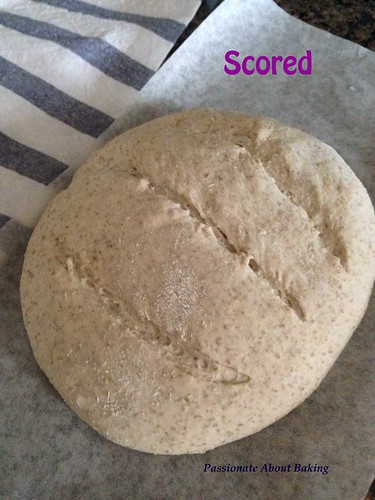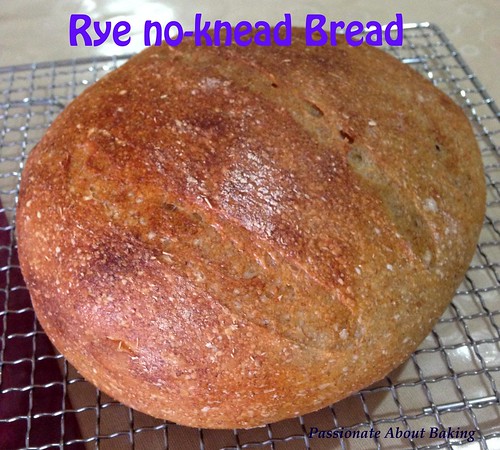 Recipe for a Rye No-knead Bread, adapted from King Arthur Flour.
Recipe for a Rye No-knead Bread, adapted from King Arthur Flour.(Makes two regular loaves)
Ingredients:
660g lukewarm water
207g Rye flour
907g Plain Flour
15g Salt
1 1/2 tbsp Instant yeast
Method:
1. Combine all of the ingredients in a large mixing bowl, or plastic bucket.
2. Mix and stir everything together to make a very sticky, rough dough.
3. Cover the bowl or bucket, and let the dough rise at room temperature for 2 hours. Then refrigerate it for at least 2 hours, or for up to about 7 days. The longer you keep it in the fridge, the tangier it'll get; if you chill it for 7 days, it will taste like sourdough. Over the course of the first day or so, it'll rise, then fall. That's OK; that's what it's supposed to do.
4. When you're ready to make bread, sprinkle the top of the dough with flour; this will make it easier to grab a hunk.
5. Plop the sticky dough onto a floured work surface, divide into two and round them into a ball, or a longer log. Don't fuss around trying to make it perfect; just do the best you can.
6. Place the dough on a piece of parchment. Sift a light coating of flour over the top; this will help keep the dough moist as it rests before baking.

7. Let the dough rise for about 45 to 60 minutes. It won't appear to rise upwards that much; rather, it'll seem to settle and expand. Preheat your oven (and baking stone, if you're using one) to 220°C while the dough rests. Prepare a stainless steel container. Omit this if using a Dutch oven.
8. When you're ready to bake, take a sharp knife and slash the bread 2 or 3 times, making a cut about 1/2" deep. The bread may deflate a bit; that's OK, it'll pick right up in the hot oven.

9. Transfer the dough onto the baking stone and cover it with the stainless steel container. If using Dutch oven, remove the cover and carefully place in the dough.
10. Bake the bread, covered for 25mins, then remove the stainless steel container, or the Dutch oven cover. Continue baking for another 15-20mins, or until browned.
11. Remove the bread from the oven, and cool it on a rack. Repeat #9 with the other dough.




2 comments:
The strong yeast smell you mentioned is likely due to the very large amount of yeast you are using. With the very long feementation times used in no-knead techniques, you want to use a very small amount of yeast (1/4 tsp.). If the yeast consume the sugars in the flour too quickly they start to die off that that imparts an odor.
Even so, you had a beautiful crust on this loaf! I am looking forward to experimenting with this. I am thinking of offsetting the tendency of rye to be a denser bread by adding some vital wheat gluten to give me more trapped air and bigger inclusions. Wish me luck!
Lovely blog you havee here
Post a Comment
Be free with your mind!